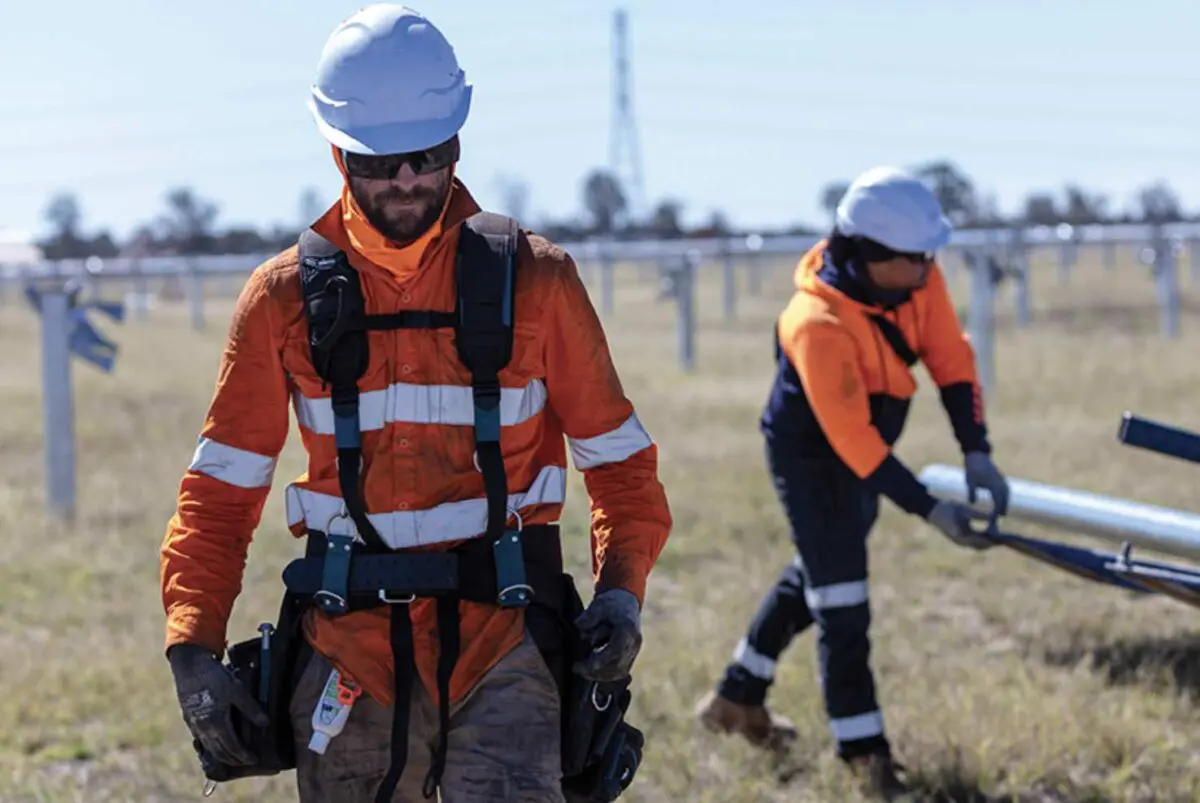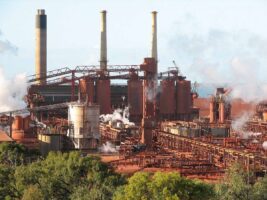Queensland’s ambitious renewable energy and climate targets, including to cut greenhouse gas emissions by 75% by 2035, have been written into law after being voted through parliament on Thursday, although without the full support of the Opposition LNP.
The Miles Labor government says the two “landmark pieces of legislation” have locked in Queensland’s three renewable energy targets of 50% by 2030, 70% by 2032 and 80% by 2035 and emissions reduction targets of 30% below 2005 levels by 2030, 75% below by 2035 and net zero by 2050.
The government has also acted to lock in public ownership of energy assets and a $150 million Job Security Guarantee and Fund to ensure workers at existing publicly owned power stations and coal mines have access to new jobs and training or financial assistance during the transition.
“Our vision for Queenslanders is to produce cheap, clean, reliable, renewable energy for them, their families and their businesses. Now, we get on with the job of delivering,” said premier Steven Miles on Thursday.
“We will build the renewable energy generation and transmission assets needed to power big industries in Gladstone, Mackay, Townsville and Mt Isa.
“In turn, we create clean economy jobs for generations to come – building our state and national energy independence.
“We also lock in a strong emissions reduction target … (that) will provide certainty industry and deliver a world-leading response to climate change, while protecting Queensland’s pristine natural assets from further impact.”
But while there was bipartisan support for the emissions reduction legislation, including the new 75% interim target, this did not extend to the renewable energy targets, which LNP argues should not be written into law.
“The Liberal National Party supports the targets, but we cannot support to legislate them when there is no credible pathway to achieve them,” said shadow energy minister Deb Frecklington.
“The risk that Labor’s plan poses to the energy bills of Queenslanders is far too great, and in Queensland’s cost-of-living crisis Queenslanders should not have to take that risk.
“The bill neglects to consider the extraordinary costs of the infrastructure proposed and its impact on taxpayers.”
The federal Coalition, led by its Queensland based leader Peter Dutton and energy spokesman Ted O’Brien are demanding that large scale renewables be stopped and coal fired power stations kept open to wait for nuclear power to become an option.
The state based LNP has been non-committal on nuclear, but its refusal to support the renewables bill has raised questions about its motives. Queensland remains the state with lowest share of renewables, and the biggest dependence on coal.
Green groups on Thursday expressed their frustration at the position being taken by the Queensland LNP, particularly in the context of the upcoming state election in October.
“It’s essential that ambitious, durable climate targets and policies have bipartisan backing, so the LNP’s support [for the emissions targets] just months out from a state election is a breakthrough,” said the Australian Conservation Foundation’s climate and energy program manager Gavan McFadzean.
“But by opposing the renewable energy targets legislation, the LNP has an emissions reduction target without a plan. This sends mixed messages to businesses that want to invest in renewables, clean tech and jobs in Queensland.
“If the LNP is fair dinkum, it needs to outline a detailed plan for Queensland’s clean energy transition before the election,” McFadzean said.
The World Wildlife Fund said bipartisan support for a strong emissions target was “a watershed moment” for the state’s climate politics.
“Under Premier Steven Miles’ leadership, Queensland – historically a fossil fuel state – is seizing the opportunity to become a renewable energy superpower with these two bills,” said WWF for Nature-Australia CEO Dermot O’Gorman.
But O’Gorman, too, questioned the motives of the LNP in opposing legislation of the renewables targets.
“A climate target must be accompanied by a plan to transition to renewable energy. You can’t have one without the other. They are inseparable,”
“Without a credible renewables plan, Queenslanders will not have confidence the LNP can achieve the emissions target.”
The Queensland Renewable Energy Council (QREC) says the enshrining the state’s renewable energy targets in law will provide certainty to industry and communities on the shift away from coal.
“What comes with the targets is a continued investment pipeline into renewable energy projects into Queensland, an investment towards a modern energy system that brings with it regional economic development and prosperity,” said QREC chief Katie-Anne Mulder.
“The opportunity now is to continue the hard work, in partnership with all stakeholders – landholders, local councils, First Nation representatives, existing industries, prospective employees and suppliers – to deliver the renewable energy projects in a way that maximises the benefit and involvement of Queenslanders.”
The Carbon Market Institute says the bipartisan support for the high emissions target does much the same, providing vital certainty for investors and laying a foundation for Queensland workers and communities to ensure they are supported throughout the transition.
“Queensland has abundant opportunities for investment in climate solutions, including clean energy, transport solutions and carbon farming, and should now build on policies that can scale up current investments and decisively shift towards a net zero and nature positive economy,” said CMI CEO John Connor.
And Connor, along with others, says it is now over to the federal government to set a similarly high interim emissions target and to the federal opposition to support it.
“Strong state and territory targets …send a clear signal to the federal government as it looks to establish its own 2035 nationally determined contribution under the Paris Agreement, which is due by early next year ahead of COP30 in Brazil,” Connor said.
“If a state with a significant resource sector such as Queensland can set an emissions reduction target of 75% by 2035, then the federal government can and must go higher,” said the Australian Marine Conservation Society’s Lissa Schindler.
Schindler, the AMCS campaign manager for the Great Barrier Reef – currently going through what is believed to be one of its worst ever coral bleaching events – says the current federal emissions reduction target of 43% by 2030 is consistent with a 2°C warming pathway, which equates to the loss of 99% of the world’s coral reefs.
“If Australia is serious about fulfilling its commitment to UNESCO to set more ambitious emission reduction targets in alignment with efforts to limit global temperature increase to 1.5°C, then we would expect at least a 90% emissions reduction target by 2035,” Schindler said.
“The Queensland LNP now stands in contrast to its federal counterparts, who still debate the reality of climate change, propose fanciful nuclear energy pipe dreams and oppose federal Labor’s modest 43% by 2030 emissions reduction target,” added McFadzean.
Notably, the Queensland LNP has not backed its federal counterpart’s nuclear push. “Until both sides of Canberra agree, that will never happen because there won’t be investment,” state opposition Leader David Crisafulli has said.










